
How many people know that the A/V receiver manufacturers do pretty much the same thing? Much like a car, an A/V receiver is built on a platform, one that can be upgraded and modified over time as new features are added. But there eventually comes a point where the only practical way forward is to start fresh with a clean-sheet design. That’s where Yamaha’s latest mid-priced RX-V receiver line comes in.
Launched with just two models, the RX-V4A ($440) and RX-V6A ($600), the subject of this review, these all-new receivers offer a fresh design aesthetic, with just two major controls visible on the front panel. Like earlier RX-V series models, The RX-V6A has a composite front panel, and there are rounded side corners to soften the look. A huge central volume knob dominates the front, with a smaller multi-function knob on the right side. No display is visible until you turn on the power, when an LCD display screen lights up. A row of hidden touch switches running along the lower edge gives instant access to programmable scene settings and other minor controls. The main power switch, a 1/4-inch headphone output, A USB type-A port, and a socket for the supplied YPAO (Yamaha Parametric Room Acoustic Optimizer) mic round out the front panel’s feature set.
FEATURES
Designing a $600 A/V receiver is a delicate balancing act where you have to determine the best blend of performance and features to meet the needs of users. It’s also important to be forward-thinking and anticipate what future tech developments are headed down the pike. The RX-V6A shows a lot of this type of planning, with several highly anticipated features promised through upcoming firmware updates.
This story is from the February - March 2021 edition of Sound & Vision.
Start your 7-day Magzter GOLD free trial to access thousands of curated premium stories, and 8,500+ magazines and newspapers.
Already a subscriber ? Sign In
This story is from the February - March 2021 edition of Sound & Vision.
Start your 7-day Magzter GOLD free trial to access thousands of curated premium stories, and 8,500+ magazines and newspapers.
Already a subscriber? Sign In

Pinnacle Picture Performance
IT IS a small miracle that you can buy a TV as good as the 77-inch Samsung S90C Quantum Dot OLED for $2500.
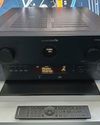
AV Masterpiece
THE AV PROCESSOR is the less well-known sibling of the AV receiver. The main difference being that processors don't have built-in amplification.
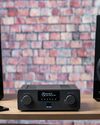
Sit and Listen Streaming
FOR ANYONE who has been waiting for streaming music to be a high-quality sit-and-listen experience, the SVS Prime Wireless Pro SoundBase streaming integrated amp fits the bill.
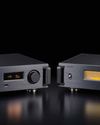
Worth the Splurge?
AS A RULE I'm not particularly susceptible to the \"audio-jewelry\" school of component design; I'm a value/performance guy.

Focus on Gaming
OPTOMA BOASTS of being both the top 4K UHD projector brand globally and the number one Digital Light Processing (DLP) brand in the United States for 2022, citing the PMA Research Worldwide Projector Census, making the company no stranger to the world of projected light.

Sonic Surprise
OVER THE YEARS I've reviewed hundreds of audio and video products covering all the usual bases. But not up to now a soundbar.
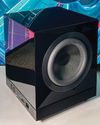
Deep Concentration
IN THE realm of high-fidelity audio, the Bowers & Wilkins DB3D subwoofer offers a fusion of compact design and powerful performance.
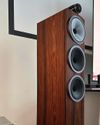
When Less is More
MY EXPERIENCE with Bowers & Wilkins dates back over thirty years to my high school days, when I first admired the 801 Matrix in Stereophile magazine.

SHARP, BRIGHT, & BUDGET-FRIENDLY
IN JUST a few short years the home projector landscape has undergone a radical revolution in terms of price and selection.

They are Coming.I Can't Hold Them Back Any Longer.
This is my last communication. Outer walls breached. Door is splintering. Hinges giving way. Out of ammo. Just one grenade left. I'll take as many as I can with me. God have mercy on my soul.